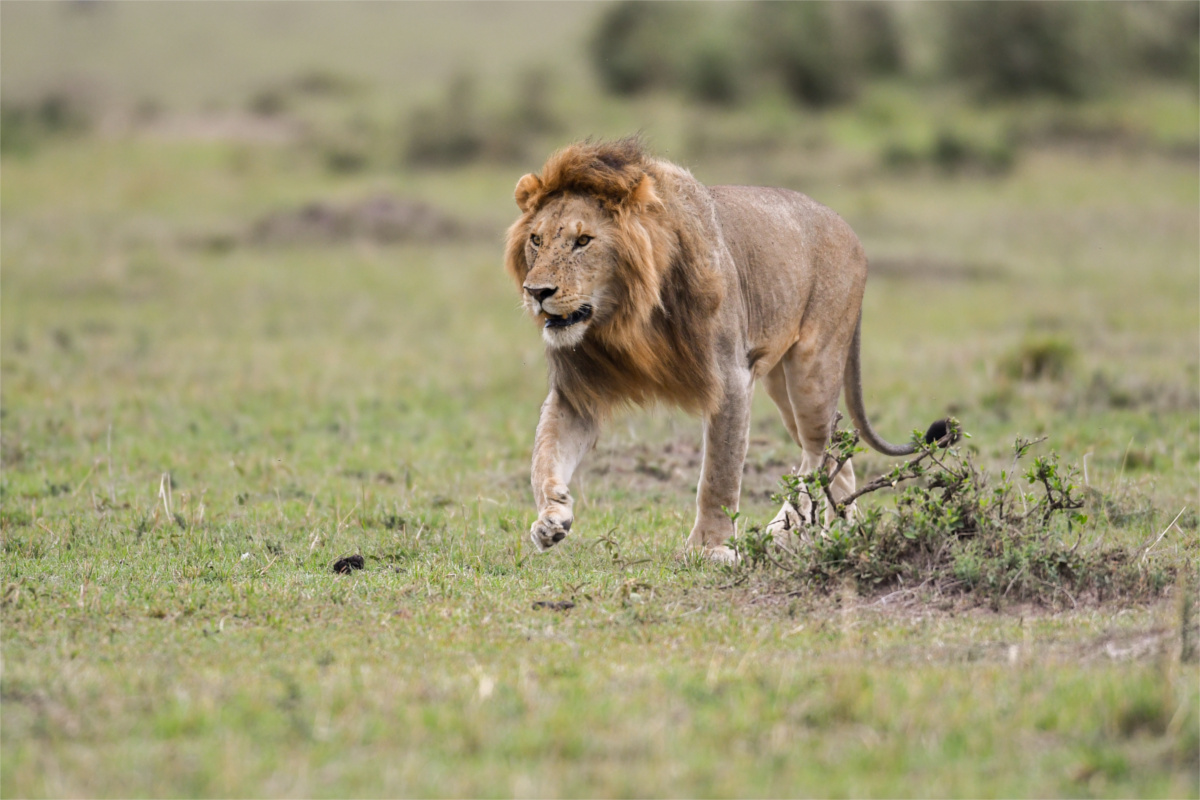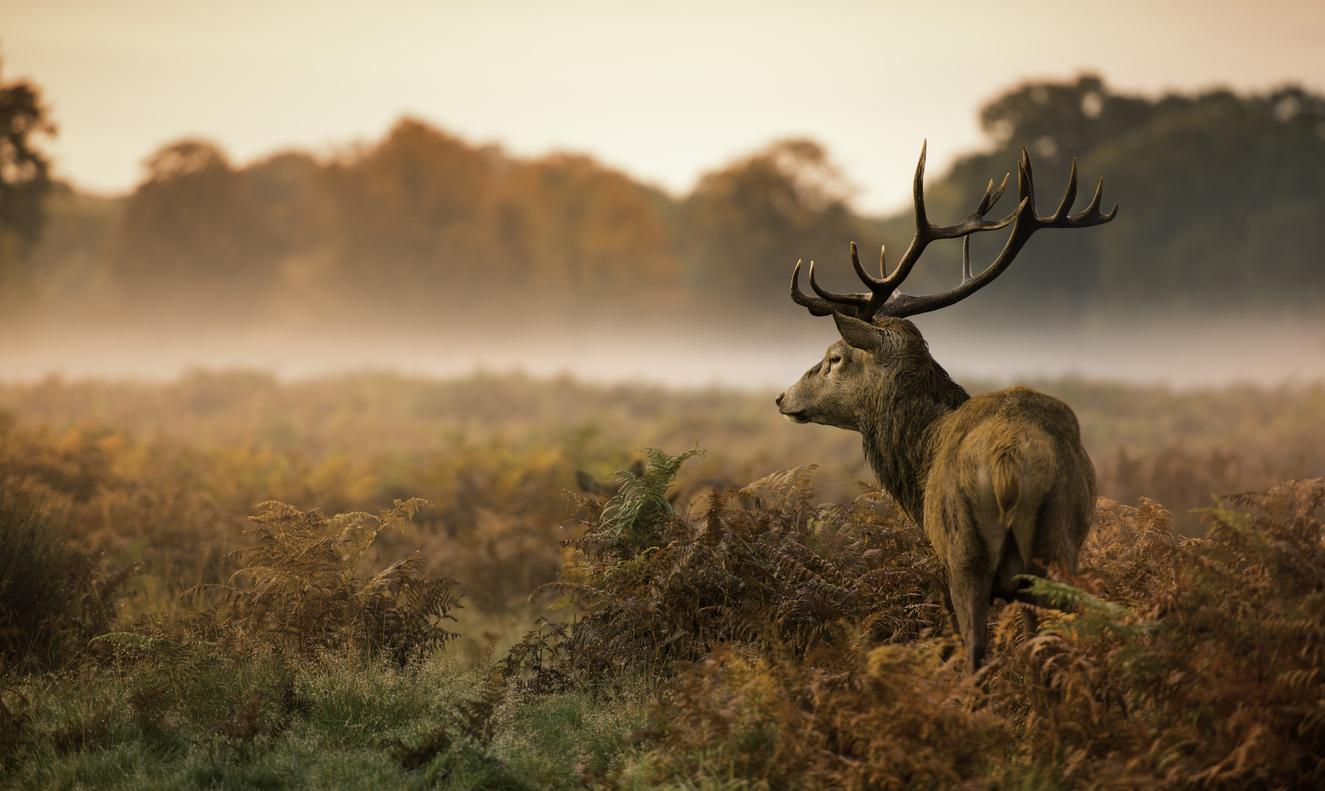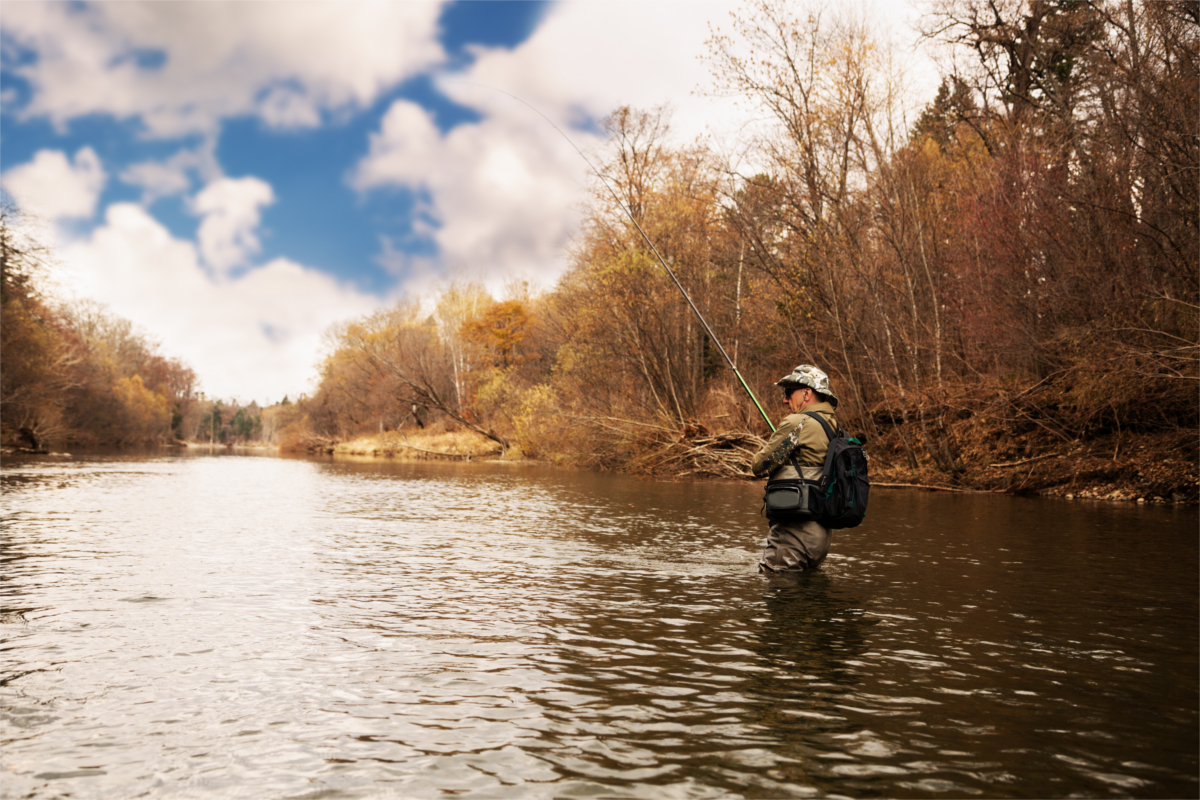Types of Deer Around the World
“Deer” is the generic name for different species of mammals from the Cervidae family. Some of them, like the fallow deer, are very common all over the world. Others, like the white-tailed deer of America and the reindeer or caribou of the northernmost regions, are very characteristic of a particular area.
“Deer” is the generic name for different species of mammals from the Cervidae family. Some of them, like the fallow deer, are very common all over the world. Others, like the white-tailed deer of America and the reindeer or caribou of the northernmost regions, are very characteristic of a particular area.
________
Known for their majestic antlers and noble and gentle appearance, the different types of deer around the world share many things in common – but there are ways to differentiate them. In this AnimalWised article we’ll go over the range, main traits and diet of the main deer species.
Arctic and Subarctic Deer: Moose, elks and reindeer
While it is true that the moose and the elk are the same animal, known scientifically as Alces alces, in North America “elk” is used to refer to the wapiti or Cervus canadensis, which creates the confusion. The North American moose is considered a subspecies of the Eurasian elk, but some scientists classify it as a separate species.
Where do moose or Eurasian elks live?
The main habitats of the moose or elk are the temperate to subarctic forests of the Northern Hemisphere. They can be found in Alaska, Canada and the northeastern corner of the United States in America. In Eurasia, elks live in Scandinavia, Finland, the Baltic republics, across Russia, reaching its easternmost point, and the northern part of China.
Moose do not live in herds; instead, they are solitary and calm animals. They are diurnal animals, and they do not graze but browse. This means that they do not eat grass, but they prefer leaves and shoots instead. Moreover, they are quite picky.
How big are moose or Eurasian elks?
This species is actually the largest type of deer in the world. Adult moose can reach 2.1 m (6 ft 9) at the shoulder – the tallest subspecies is the Alaskan moose. Their average antlers of a male moose are about 1.5 m (4 ft 9) wide, and they are broad and flat; female moose do not have antlers.
Where do elks or wapitis live?
What is called “elk” in North America is the wapiti; what is called “elk” in Europe is the moose. Elks are native to East Asia and North America, and they live in mountain ranges, especially in the forests. American elks are more adaptable to different environments than the Asian subspecies.
Elks or wapitis live in herds made up of same-sex individuals. Herds of females and calves can get quite large, up to 50, while males can stay alone or form “bachelor groups”. Elks migrate southwards when winter arrives.
How big are elks or wapitis?
Although not as large as moose or Eurasian elks, elks or wapitis are also among the biggest types of deer. Males are much larger than females; while elk bulls can stand at 1.5 m (4 ft 9) at the shoulder and have antlers about 1.2 m (3 ft 9) long, elk cows reach only 1.3 m (4 ft 3) at the shoulder and do not have antlers at all.
Where do reindeer or caribou live?
Reindeer are known as caribou in North America, although they are scientifically known as Rangifer tarandus. Reindeer live in the mountain ranges, boreal forests and tundras of the Arctic and Subarctic regions of Eurasia and North America, even in higher latitudes than moose.
They are a vulnerable species, but they are very popular as they are the animals that pull Santa Claus’s sleigh. Reindeer live in large herds, and they migrate medium to large distances during the year.
How big are reindeer or caribou?
Reindeer are large animals, roughly the size of elks. They reach 1.5 m (4 ft 9) at the shoulders, although the further north you go, the shorter they get. Reindeer are notable because they are the only type of deer in which females grow antlers. Their antler-to-body ratio is also the largest, as the antlers of some male reindeer can reach 1.35 m (53 in) long.

Deer of Europe: Fallow and roe deer
Fallow deer are smaller and typical of warmer climates. Their scientific name is Dama dama, and they include the subspecies of the Persian fallow deer. Fallow deer can be recognized by their chestnut coat with white mottling, although some individuals are black or white. Their coat gets darker in the winter and they actually shed their antlers.
European roe deer, or Capreolus capreolus, are smaller and grayer than fallow deer. Their coat has reddish shades, more noticeable in the summer. Another difference between fallow deer and roe deer is that while fallow deer have a noticeable black stripe on their tails, the tails of roe deer are barely visible at all.
Where do fallow deer live?
Fallow deer are native to Western Europe, but nowadays they have been introduced to many different parts of the world. You can find fallow deer in the British and the Greek Isles, but also faraway places like southern South America and even New Zealand.
Unlike moose, fallow deer are grazers. They spend their days eating grass in open grasslands and woodlands. They live in herds, which can reach populations of more than a hundred.
How big are fallow deer?
Female fallow deer are smaller than males, and they do not have antlers. While does measure up to 85 cm (2 ft 9) tall at the shoulders, males reach 95 cm (37 in), and their antlers are about the same length. Fallow deer have different antlers than red or white-tailed deer, because they are broad and flat like that of moose.
Where do roe deer live?
Like fallow deer, roe deer are native to Western Europe. Unlike the moose, they do not reach the northernmost regions. Roe deer can be found in rural areas, but they prefer the woodlands of mountain ranges. They have crepuscular habits, and they are quite solitary and territorial.
How big are roe deer?
Roe deer are among the smallest types of deer around the world. Adult specimens rarely surpass 75 cm (2 ft 5) at the shoulder, and the male’s antlers only reach 25 cm (10 in) long at best. One of the most recognizable traits of roe deer is that their antlers start to grow again as soon as they are shed.
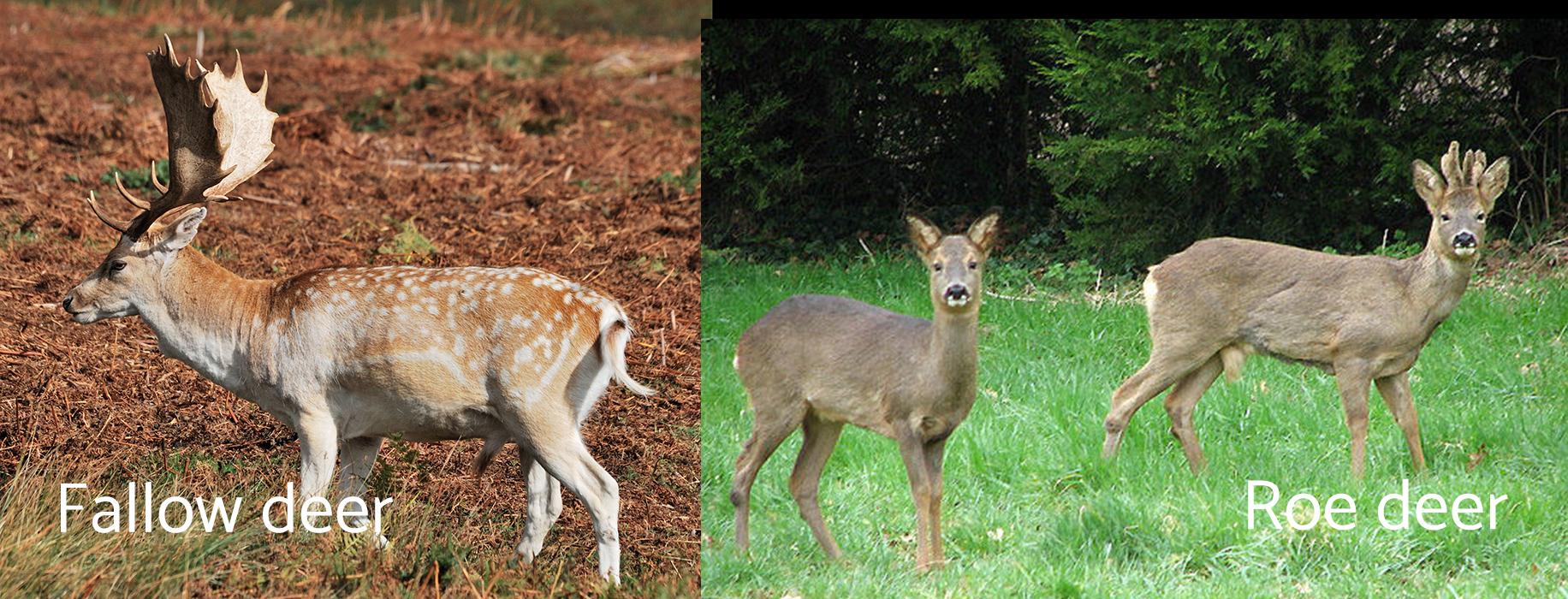
Deer of Asia: Barasingha, sambar, muntjac, tufted deer and water deer
As we said before, both moose and elks – or Eurasian elks and wapitis – are also native to Asia. However, there are some types of deer that are only found in that continent. They are the following:
Barasingha or swamp deer (Rucervus or Cervus duvaucelii): This vulnerable deer can be found in India and Nepal, where they live in medium-sized herds in grasslands and mountains. Barasinghas reach 120 cm (46 in) tall at the shoulder, and the male’s antlers measure about 75 cm (30 in) long. They can be recognized by their yellowish coat and because they have more than three prongs or spikes in their antlers.
Sambar deer (Rusa unicolor): The range of this vulnerable deer species spreads from Southeast Asia to the western Indian subcontinent. Sambar deer are quite large, as they reach 160 cm (63 in) at the shoulder, and the male’s antlers can reach 110 cm (43 in) long. They live in large herds in dense forests of all types. Sambar deer are the largest among Asian deer, not counting moose.
Javan rusa or Sunda sambar (Rusa timorensis): A vulnerable deer native to Indonesia, particularly to Java and Bali, but they have been introduced to other countries in Asia and Oceania. They live in savannas and dry to mixed forests. Javan deer are smaller than Sambar deer, but their ears and antlers look larger.
Philippine sambar or brown deer (Rusa marianna): A vulnerable deer native to the Philippines. They live in grasslands and forests, and their habitat is currently threatened, so they have been introduced to other areas of the world. Philippine brown deer only reach 70 cm (28 in) tall at the shoulders, although the antlers of the males reach 40 cm (15.7 in) long.
Visayan or Philippine spotted deer (Rusa alfredi): An endangered deer native to the Visayan islands of the Philippines. They live in rainforests and they are quite small, at 80 cm (31 in) tall at the shoulders. Visayan spotted deer can be recognized by the creamy spots in an A-pattern on their back. The males have quite short antlers.
Muntjac or barking deer (Muntiacus): This genus includes 12 deer species spread across South Asia, from the Himalayas to Indonesia. Muntjac were introduced to the British Isles at the beginning of the 20th Century, where they have multiplied. Muntjacs are small deer, and the antlers of the males are very short.
Tufted deer (Elaphodus cephalophus): This near-threatened deer species is easily recognizable from all the rest because of its small size, grayish coat with a black tuft on the top of the head, and the male’s fangs. It is native to China and Myanmar, where it inhabits the forests of mountain ranges. Tufted deer reach only 70 cm (28 in) tall at the shoulders, and the antlers of the males are barely visible.
Water deer (Hydropotes inermis): This vulnerable deer species is native to China and Korea, where it inhabits grasslands and swamps near water sources. As their name suggests, water deer are excellent swimmers. Like the muntjac, they were introduced to Great Britain, where their population has grown unexpectedly. Water deer are the smallest type of Asian deer, reaching only 55 cm (22 in) at the shoulders. They have impressive tusks, longer than those of tufted deer, and they do not have antlers.
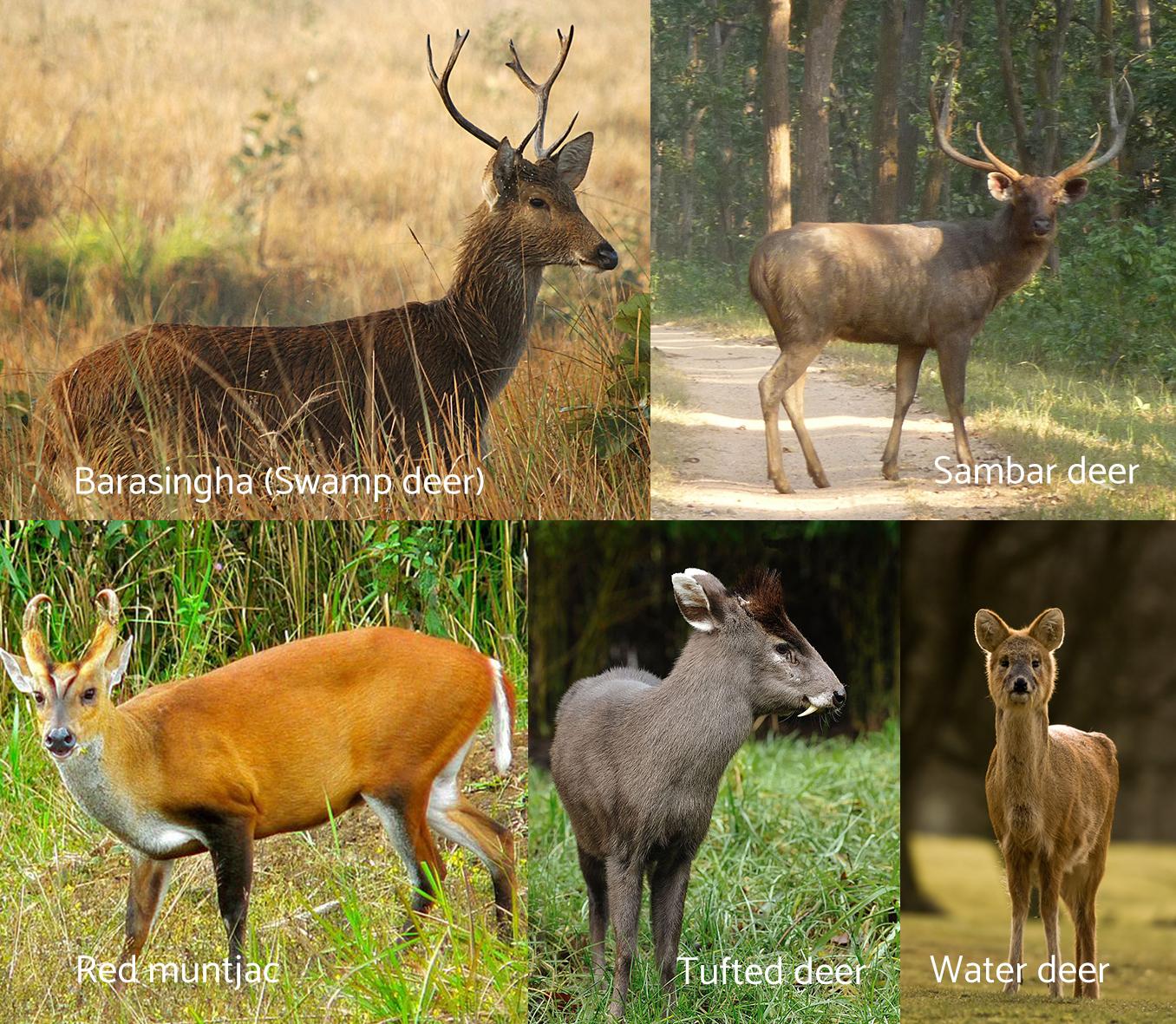
“Deer” is the generic name for different species of mammals from the Cervidae family.
Cervus: Red and sika deer
Red deer and sika deer belong to the same genus, that of Cervus. However, while red deer (Cervus elaphus) can be found across Eurasia and the north of Africa, sika deer (Cervus nippon) are relegated to Japan. They are easily distinguishable, as sika deer maintain their spotted coat into adulthood and red deer do not.
Where do red deer live?
Red deer are among the most widespread types of deer, and in fact they are the only deer species that you can find in Africa. While they are native to the mountains of Eurasia and North Africa, they have been introduced to America and Oceania as well.
They live in large single-sex herds that meet in the mating season; some of these herds even surpass 3,000 individuals. Red deer inhabit forests of different kinds; there are many different subspecies, and their coat color depends on the season and landscape.
How big are red deer?
Red deer are among the largest types of deer, although they are smaller than moose and Sambar deer. They reach about 130 cm (51 in) tall at the shoulder; the red deer of the Carpathian Mountains are the largest of all. Only males have antlers, which can measure 115 cm (45 in) long. The males of some red deer subspecies have a sort of mane around their neck.
Where do sika deer live?
Sika deer are also known as Japanese deer, because while they used to inhabit large areas of East Asia nowadays they are mostly found in Japan; small isolated groups are still living in Russia, China and Vietnam. However, they have been introduced to Europe, North America and New Zealand, where they have bred and mixed with red deer.
The preferred habitat of sika deer are temperate and subtropical forests, where they can forage in peace. They can live alone or in small same-sex herds, which become bigger in colder weather.
How big are sika deer?
Sika deer are smaller than red deer or Sambar deer but larger than other East Asian deer such as tufted or water deer. They reach 110 cm (43) high at the shoulder. While male deer grow upright antlers that can reach 80 cm (30 in) long, female sika deer grow short black bumpsin their foreheads.
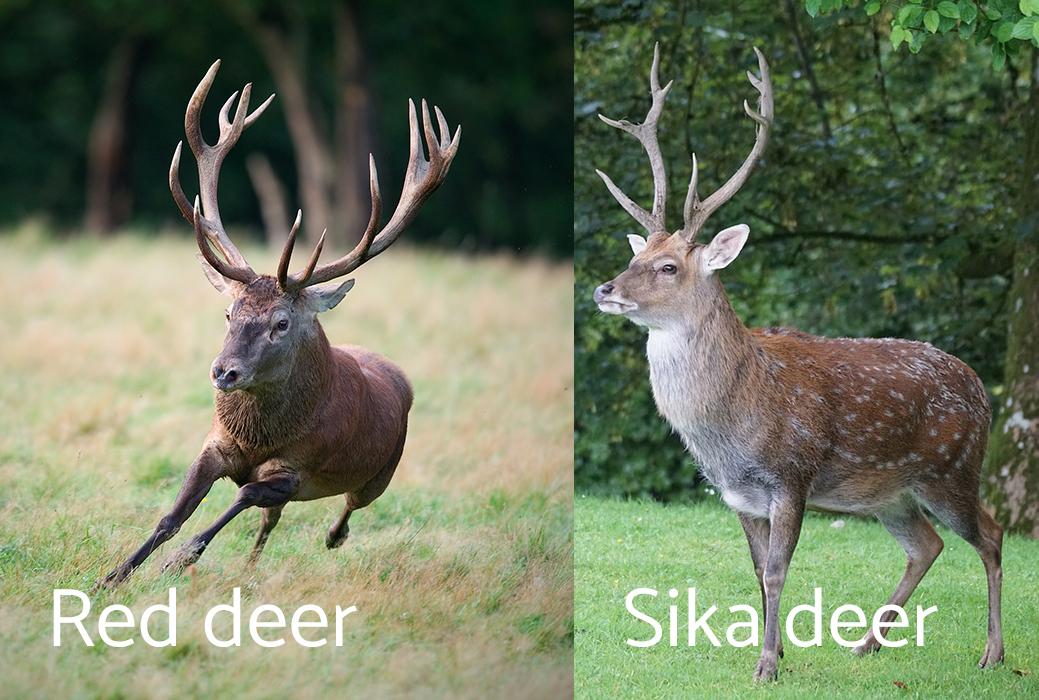
Deer of North America: Mule deer and white-tailed deer
While some of the types of deer we mentioned before can be found in North America, two of them are native to that continent: the mule deer (Odocoileus hemionus) and the white-tailed deer (Odocoileus virginianus).
Mule deer can be recognized by their large, long ears, similar to those of mules. They have the ability to stot, that is, of jumping with all four legs at once into the air, like gazelles. White-tailed deer, on the other hand, are known for their tail, which is completely white on the underside. The white-tailed deer is the emblem mammal of many states in the U.S., and it’s also popular because of the Disney film Bambi.
Where do mule deer live?
Mule deer inhabit the grasslands, scrublands, deserts and lower mountain ranges of the western side of Mexico, the United States and Canada. There are different subspecies of mule deer; the California mule deer can be found in the Sierra Nevada, while the Rocky Mountain mule deer is one of the native animals of Utah.
Mule deer can be solitary or live in small groups. While some live in somewhat remote areas, others have adapted well to living near human populations.
How big are mule deer?
Mule deer reach 105 cm (42 in) tall at the shoulder, being larger on average than white-tailed deer. The antlers of male mule deer grow upward, not forward.
Where do white-tailed deer live?
The range of the white-tailed deer is much larger than that of the mule deer; they live in the eastern side of North America, but also all over Central America and the northern coast of South America. Moreover, white-tailed deer have been introduced to many other countries. Consequently, there are many different white-tailed deer subspecies, and they vary greatly in size.
White-tailed deer are very adaptable, although they prefer temperate climates. You can find this type of American deer in woodlands, swamps and prairies, and even savannas. They often go near human sites. They usually live in groups, especially female-only or with one dominant male.
How big are white-tailed deer?
White-tailed deer vary in size depending on their subspecies and habitat. The colder the weather, the larger they are; the largest white-tailed deer reach 120 cm (47 in) at the shoulder, but in general they are smaller than mule deer. Their antlers grow slightly forward, and they reach 65 cm (25 in) long.
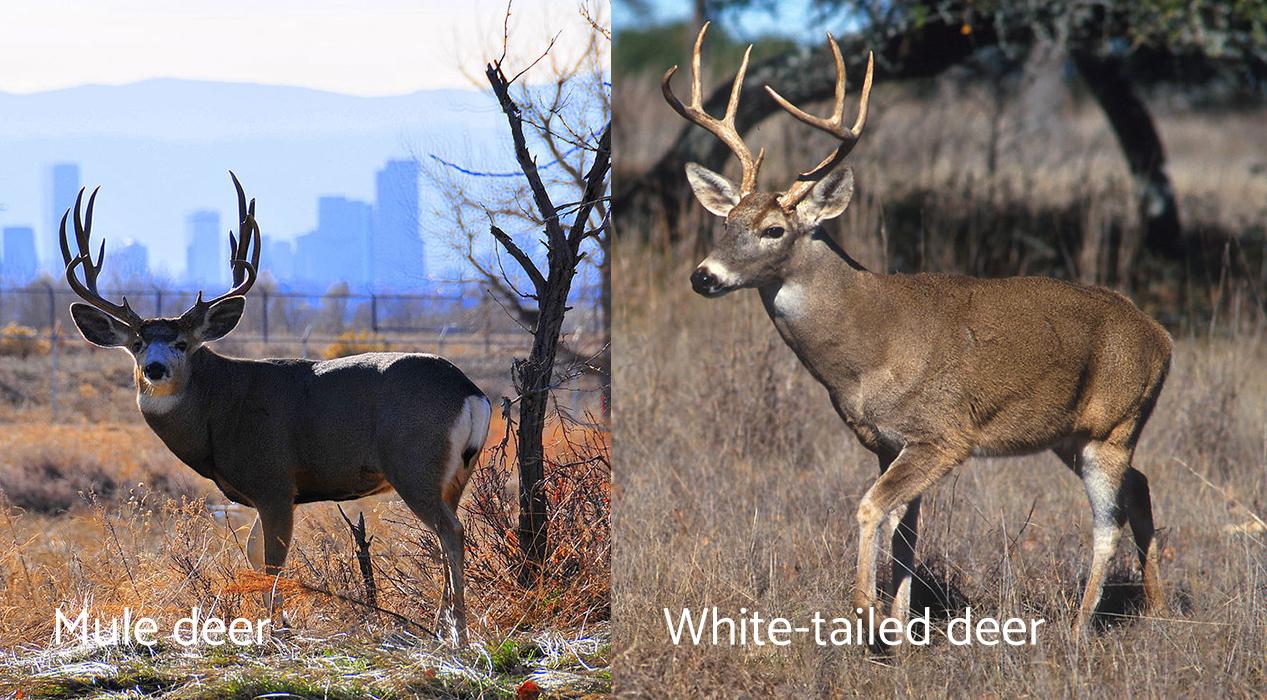
Deer of South America: Marsh deer, pudús and tarucas
The native deer species of South America are the following:
Marsh deer (Blastocerus dichotomus): This vulnerable species is the largest of the South American deer, but it does not usually surpass 130 cm (4 ft 2) tall at the shoulder. It lives in central and eastern South America, especially near water sources like marshes and rivers.
Northern pudú (Pudu mephistophiles): This endangered deer is the smallest in the world. Northern pudús live in high altitudes, in the Andes range of Colombia, Ecuador and Perú. They only measure 35 cm (14 in) tall at the shoulder, and their backwards antlers are only 6 cm (2.4 in) long.
Southern pudú (Pudu puda): This endangered deer also lives in the Andes, but in the lower altitudes of Argentina and Chile. It is somewhat larger, at 45 cm (18 in) tall at the shoulder. The antlers of the Southern pudú can reach 9 cm (3.5 in) long.
Taruca or North Andean huemul (Hippocamelus antisensis): This vulnerable species lives in the Andes, from Peru to north Argentina. They reach 80 cm (31 in) tall at the shoulder, and the antlers of the male are 25 cm (10 in) long.

What about musk deer?
If you’ve read this list looking for the musk deer in your region, you may be surprised to find out that musk deer are not true deer; they belong to a different family, the Moschidae. Unlike true deer, musk deer do not have antlers but they do have a musk gland, which gives them their name.
Musk deer are native to Asia, where they live in forests and mountain ranges. They can reach quite high altitudes; in fact, the endangered alpine musk deer is one of the native animals of the Himalayas.
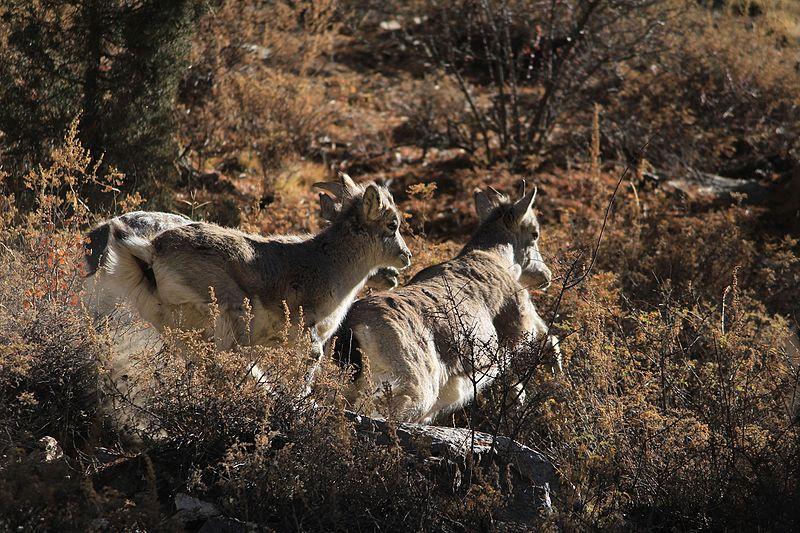
https://www.animalwised.com/types-of-deer-around-the-world-1345.html


